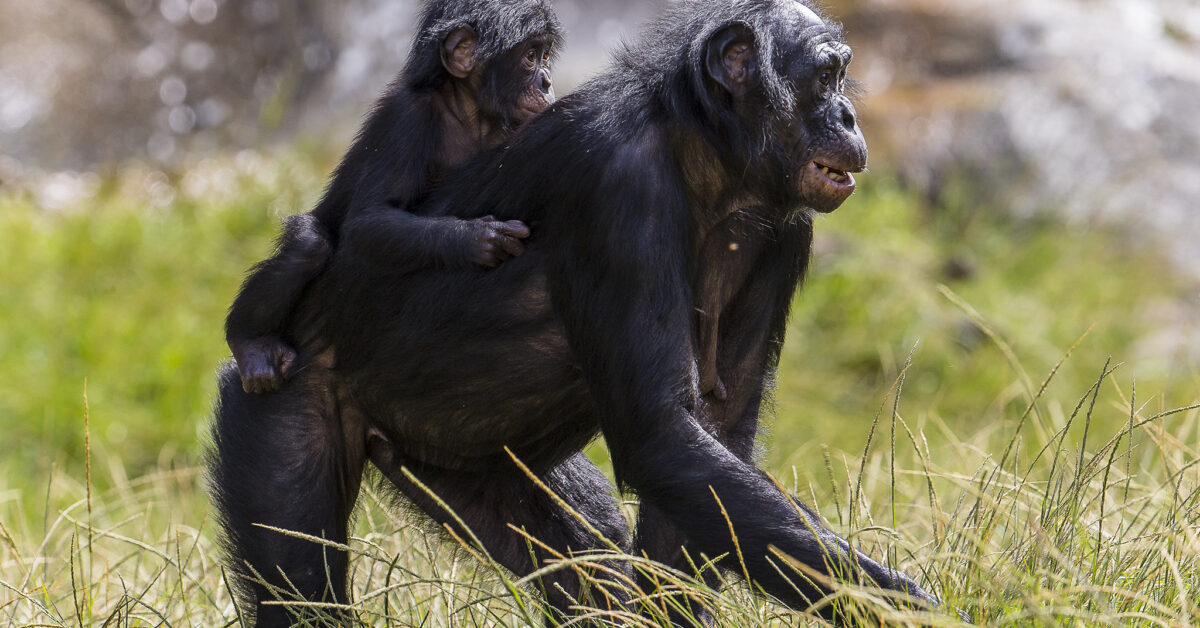Summary of The Female Lead – San Diego Zoo Wildlife Alliance Stories:
In the diverse world of wildlife, mothering can take various forms – from biological to adoptive and even foster care. Key examples include the matriarchal meerkats, who live in large groups and share responsibilities for nurturing and protecting their young, demonstrating that raising offspring is often a collective effort. At the San Diego Zoo, staff have had to step in to act as surrogate mothers for several animals, such as an orphaned orangutan named Kaja and a koala named Omeo, highlighting how human intervention can sometimes bridge the gap when natural mothers are unable to care for their young. Additionally, bees showcase a different approach, with the queen bee central to the colony’s survival, emphasizing the variety of mothering roles in the animal kingdom. The story of Ollie, a cloned Przewalski’s horse raised by a domestic horse, illustrates the innovative ways conservationists are working to preserve endangered species. These stories from across the animal kingdom echo the theme that motherhood, in its many forms, is essential for the nurturing and continuing life.
– The multifaceted roles of mothers in wildlife, highlighting biological, adoptive, and foster care in animal communities.
– The impact of human intervention in wildlife care, particularly in zoos and conservation efforts.
– The role of matriarchs in animal societies and their influence on group dynamics and survival.
– Innovative conservation efforts at the San Diego Zoo Wildlife Alliance, including cloning and species rehabilitation.
– The importance of cross-species mothering and its implications for conservation and species survival.
The concept of motherhood in the animal kingdom is as varied and complex as the species that embody it. From the matriarchal societies of elephants and meerkats to the intricate care systems developed by zoos and wildlife conservancies, the drive to nurture, teach, and protect the next generation is a powerful force that transcends species. The San Diego Zoo Wildlife Alliance Stories showcase an array of these mothering behaviors, emphasizing the diverse strategies animals employ to ensure their offspring’s survival.
In the wild, matriarchal societies such as African elephants and meerkats rely heavily on the wisdom and leadership of females. These matriarchs provide guidance and protection and teach vital skills to the younger members of their groups. For instance, meerkat mobs, led by adult females, function as cohesive units where duties are shared, and young pups are collectively nurtured by the group. This communal approach ensures that even if an individual mother perishes, her offspring still have a chance at survival due to the collective care from the mob.
Human intervention through wildlife care and conservation programs plays a pivotal role in the survival of many species. With its innovative conservation efforts, the San Diego Zoo Wildlife Alliance illustrates this point vividly. One such case is that of Kaja, the orangutan, who was initially unable to be cared for by his biological mother. Wildlife care specialists at the zoo took an active role in his upbringing, going to great lengths to simulate maternal presence and facilitate the mother-son bonding process. This example highlights conservationists’ adaptability and commitment to replicating natural rearing conditions as much as possible, even in controlled environments.
Cross-species mothering further exemplifies the flexible nature of maternal roles within the animal kingdom. The story of Ollie, the Przewalski’s horse clone, born to a domestic horse, illustrates this beautifully. It underscores the SAN Diego Zoo Wildlife Alliance’s forward-thinking approach to conservation. By employing cloning technology and using a surrogate from another species, they reintroduced vital genetic diversity into an endangered species. This cross-species care represents an evolutionary curiosity and a pragmatic solution to conservation challenges.
Matriarchal leadership within certain species provides another layer of understanding of the animal maternal instinct. Bonobos, for instance, showcases a unique societal structure where females lead. This dynamic, contrasting substantially from their closest relatives, the chimpanzees, emphasizes the variable nature of social structures and the role of females in wildlife communities. In bonobo societies, female leadership ensures group harmony and cooperation, significantly impacting survival and reproduction strategies.
The role and impact of queens in insect societies, especially within bee colonies, are another testament to the significance of female leadership in the animal world. The queen bee is central to the colony’s survival, dictating the hive’s genetic future and its very existence. This reliance on a single reproductive female underscores mother figures’ critical role in animal societies.
These stories and conservational efforts by institutions like the San Diego Zoo Wildlife Alliance underscore the intricate balance between nature and nurture in the wild. They highlight the importance of maternal roles, whether by biological, adoptive, or even cross-species mothers, in ensuring species’ survival. It also reflects the innovative and dedicated approaches to wildlife conservation, which are vital for preserving biodiversity in an increasingly human-dominated world. Through understanding and supporting these efforts, we can contribute to the ongoing mission of safeguarding our planet’s natural heritage for future generations.


